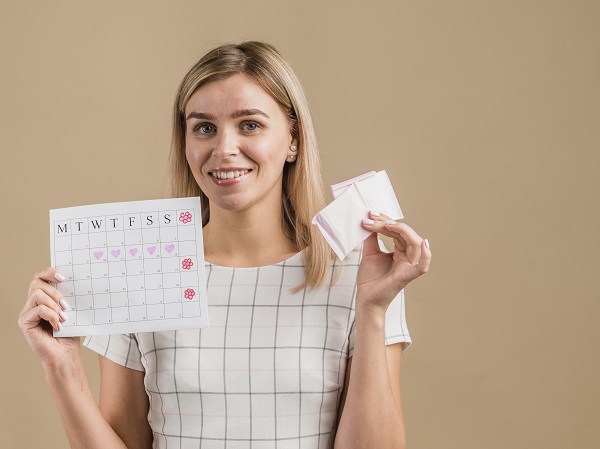Whether or not you’re trying to conceive, it’s important to know the basic biological processes. One of those biological processes is that of reproduction. Understanding the process of ovulation, conception, and pregnancy is key to knowing how a new life begins.
While you would know that pregnancy starts when an egg is fertilised by sperm, the biological details behind this may be less commonly understood. So, what happens after this process of fertilisation? From the release of an egg to its successful fertilisation and implantation, these stages are interconnected by several biological mechanisms that depend heavily on timing. Knowing how ovulation works and the optimal times for conception can be highly beneficial if you are trying to start a family. This blog will discuss these stages of fertilisation and reproduction in detail.
Ovulation: The starting point
Ovulation is the process where an ovary releases a mature egg, ready to be fertilised by sperm. It typically happens once a month as part of a woman’s menstrual cycle, around 12-16 days before the start of her next period. The menstrual cycle is regulated by various hormones, and ovulation occurs as a result of the luteinising hormone (LH) surge, which prompts the egg to leave the ovary and enter the fallopian tube.
The timing of ovulation can vary between women and from cycle to cycle, influenced by factors like stress, illness, or changes in routine. For a woman with a regular 28-day cycle, ovulation usually occurs around day 14. However, in cycles that are shorter or longer, ovulation can happen earlier or later.
Tracking ovulation
For those trying to conceive, understanding when ovulation occurs is crucial because it marks the time when a woman is most fertile. Ovulation can be tracked using various methods:
Ovulation Predictor Kits (OPKs):
These tests measure the surge in luteinizing hormone (LH), which occurs about 24-48 hours before ovulation. A positive result indicates that ovulation is imminent.
Basal Body Temperature (BBT):
After ovulation, a woman’s body temperature slightly rises due to the increase in progesterone. Charting BBT daily to understand the pattern can help identify the timing of ovulation.
Cervical Mucus Changes:
As ovulation approaches, cervical mucus becomes more slippery and stretchy, resembling raw egg whites. This helps sperm travel more easily toward the egg.
Conception: Timing is key
Conception occurs when sperm fertilises an egg. The timing is vital because an egg is viable for only a few hours, 12-24 hours after it’s released from the ovary. Sperm, on the other hand, can live in the female reproductive tract for up to seven days. This means there is a small “fertile window”—approximately five days leading up to ovulation and the day of ovulation itself—during which conception is most likely to occur.
Ovulation happens around 10 to 16 days before the next period. Hence, if you are trying to start a family, the best time to have intercourse is during the “fertile window,” which is 5 days before the ovulation, before the egg is released. This is because sperm can stay in the body for up to 7 days, it’s best for the sperm to already be there when the egg is released to increase the chances of pregnancy.
Implantation: The beginning of pregnancy
After fertilisation, the zygote continues dividing to form a blastocyst, which reaches the uterus around 5-6 days after ovulation. The blastocyst then attaches itself to the uterine lining, a process known as implantation. This marks the true beginning of pregnancy.
The body begins producing human chorionic gonadotropin (hCG), the hormone detected by pregnancy tests, soon after implantation. This hormone supports the pregnancy by maintaining the uterine lining and preventing menstruation.
What is the best time to have sex if you’re not trying to conceive?
The best time to have sex that doesn’t result in pregnancy is shortly after the menstrual window, i.e., the next day when your period ends. However, once again, it completely depends on your ovulation cycle. Some women with shorter menstrual cycles can have early ovulation, i.e. just a few days after your period ends. For instance, if you have sex one day after your period ends, the sperm can stay within the female body for 7 days. If ovulation occurs in between these 7 days, there is a chance of pregnancy. However, the chances are less but possible.
What affects ovulation and conception?
While the process of ovulation is fairly consistent, several factors can affect both ovulation and conception:
Age:
As women age, the number and quality of eggs decrease, making conception more challenging.
Health conditions:
Conditions like polycystic ovary syndrome (PCOS) or thyroid disorders can disrupt ovulation, making it less predictable or even absent in some cycles.
Lifestyle factors:
Stress, poor diet, excessive exercise, and lack of sleep can impact the regularity of ovulation.
Medications:
Some medications can interfere with hormonal balance, potentially affecting ovulation and fertility.
Closing thoughts
Ovulation, conception, and pregnancy are very timed processes, each depending on the body’s hormonal balance and reproductive health. Ovulation marks the release of an egg, and conception is possible during the fertile window surrounding ovulation. Once fertilisation occurs, implantation in the uterine lining signals the beginning of pregnancy. Understanding how these processes work and tracking ovulation can help couples trying to conceive.





